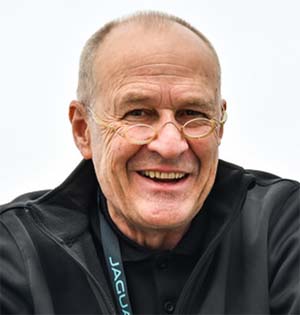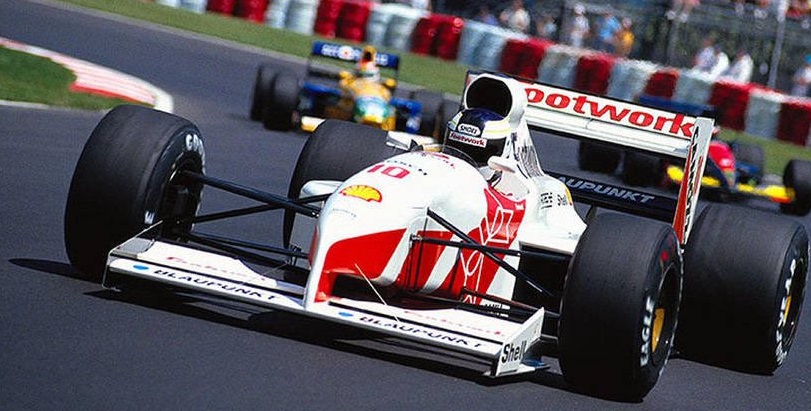By Graham Duxbury – Porsche’s history in sports car racing is illustrious, marked by innovation and a relentless pursuit of excellence. However, this is in marked contrast to the Zuffenhausen-based firm’s intermittent involvement in Formula One.
 Porsche says it is driven primarily by a desire to showcase engineering prowess. However, its early F1 involvement in the 1960s was curtailed just when success seemed imminent.
Porsche says it is driven primarily by a desire to showcase engineering prowess. However, its early F1 involvement in the 1960s was curtailed just when success seemed imminent.
Dan Gurney won the 1962 French Grand Prix in the advanced Porsche Type 804 which, with its flat-8 air-cooled engine, was developed and built entirely by Porsche. Then, unexpectedly, the team withdrew from F1. To date, this victory marks Porsche’s only F1 win as a constructor.
Two decades later Porsche took another stab at F1. This time it turned the tables on its fortunes – not as a constructor; but as an engine supplier.
This was a collaborative effort with the McLaren team, funded by Techniques d’Avant Garde (TAG), today best known for the TAG-Heuer watch brand
The TAG-Porsche turbocharged engine, designed by Hans Mezger, was superb, taking McLaren to three drivers’ championships (one with Niki Lauda in 1984 and two with Alain Prost in 1985 and 1986) plus two constructors’ titles in 1984 and 1985.
When the TAG-Porsche era ended, Porsche focused on sports car racing and its road car division. Its successes in endurance racing, coupled with the introduction of inventive road cars, allowed Porsche to enhance its brand prestige without the need for F1.

Photo credit: X
However, the lure of F1 remained and soon Porsche attempted another return, this time with the Footwork-Arrows team. A V12 3-litre naturally-aspirated engine was designed for the 1991 season.
Sadly, the halcyon days with McLaren were not reprised. This engine would prove to be a complete disaster.
The Porsche-powered Footworks would flatter only to deceive with reliability, performance, and over-weight issues plaguing the cars.
The bulky engine created packaging problems which affected the car’s aerodynamics. Despite being a V12, the engine lacked power and fuel consumption was high, putting the team at a strategic disadvantage.
Most surprisingly, this unlikely F1 engine was designed by Hans Mezger, the same man who penned the successful TAG-Porsche turbo motor. What went wrong?
One F1 insider was amazed by “how many basic tenets of F1 engine design appeared to have been forgotten” by Porsche with the V12.
“When we saw it, we thought Porsche had built a truck engine,” said another.
Unsurprisingly, the engine is statistically one of the least successful in F1 history, never having seen a chequered flag due to reliability issues.
Of course, there was a lot of “finger-pointing”. The man with overall responsibility for the project was Ulrich Bez, then Porsche’s executive vice-president of R&D.
“Hans Mezger was one of the ‘popes’ of F1 engine design,” Bez says, intimating that Mezger could do no wrong. “I simply trusted his know-how, capability, and capacity when he said he had a great idea for an engine.” So, I looked for financing because we didn’t have the money to do it ourselves.”
The financing came from Japanese entrepreneur Wataru Ohashi who had bought the Arrows F1 team and renamed it Footwork.
Unfortunately, money was paid before the engine had been tested. Alarm bells rang for Oliver and he wisely added an annexure to the Ohashi/Porsche contract spelling out some key objectives such as expected power, fuel consumption, maximum weight, and others.
Soon Oliver and Footwork’s chief designer Alan Jenkins realised they were in trouble. At Oliver’s suggestion, Jenkins wrote to Mezger outlining his concerns, proposing that, with Footwork’s help, Porsche should start from scratch and design a new engine. There was no reply from Mezger.
The team started the 1991 season by reporting that the V12 was “gutless” and hopelessly unreliable.
Perhaps bravely, Bez took responsibility. Although he correctly says that if he had had the foresight to anticipate the problems and questioned Hans Mezger’s capability no one would have believed him. “Metzger was a hero, so we protected him,” adds Bez.
The project came to a sudden halt after just six grands prix. Footwork would switch to the Ford Cosworth DFR engine for the remainder of 1991.
Some clever legal work by Oliver – thanks to his contract annexure – saw Ohashi recover all his money.
Jenkins was told years later that Bez had sanctioned an alternative V10 design project for 1992, without Mezger’s involvement. But it did not see the light of day.
